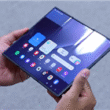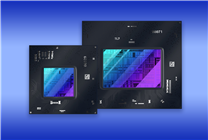The Rise of Ultra-Light Smartphones: A Focus on the Lenovo Moto X70 Air
Summary:
- The trend towards thin and light smartphones is gaining momentum, led by the recent launch of Apple’s iPhone 17 Air.
- The Lenovo Moto X70 Air stands out by addressing common challenges of ultra-slim designs without sacrificing performance or battery life.
- With innovative features such as a 4800mAh battery and advanced thermal management, it redefines user experience in lightweight devices.
1. Introduction: Embracing the Era of Slimness
As smartphone manufacturers increasingly prioritize aesthetics and convenience, the recent release of the iPhone 17 Air has reignited the race towards creating ultra-thin, lightweight devices. The objective? To captivate a market segment that desires mobility without compromising on style.
Unlike their bulkier counterparts, which often exceed 200 grams due to robust camera modules and extensive features, the Air models underscore a different philosophy: embracing minimalism with designs that focus on elegance and portability. These lightweight devices promise users a comfortable experience, allowing for prolonged use without fatigue—perfect for binge-watching, commuting, or casual browsing.
However, the allure of slim design comes with its own set of challenges. To achieve their sleek profiles, manufacturers often sacrifice critical components such as battery capacity, heat dissipation, and even camera quality, leading to an overall compromise in user experience.
2. The Lenovo Moto X70 Air: A Game Changer
Introducing the Lenovo Moto X70 Air, the first Android device in the ultra-slim category. This phone not only embraces the thin and light ethos, but it also offers unique solutions to the common pitfalls of its design philosophy.
Design and Build Quality
With a remarkable thickness of just 5.99mm and a weight of 159 grams, the Moto X70 Air claims the title of the thinnest and lightest 5G AI smartphone available. Its ultra-narrow bezels (1.3mm) contribute to an impressive screen-to-body ratio of 94.6%, enhancing both aesthetics and grip.
Battery Life: A Major Improvement
While many thin phones struggle with battery life, the Moto X70 Air features a Xinghai 2.0 blade battery that boasts an energy density of 860Wh/L. This innovation allows the device to house a substantial 4800mAh battery—70% larger than that of the iPhone 17 Air—without adding bulk. Moreover, users benefit from 68W TurboPower fast charging and 15W wireless charging, making it easy to keep the phone powered throughout the day.
Durability and Performance
Constructed from seventh-generation Corning Gorilla Glass and an aviation-grade aluminum alloy frame, the Moto X70 Air is designed for longevity. It meets IP68 and IP69 standards, offering robust protection against water, dust, and drops. This design innovation enables the smartphone to thrive in various challenging environments.
Performance-wise, the device is equipped with Qualcomm’s fourth-generation Snapdragon chip, paired with LPDDR5X RAM and UFS 3.1 storage for swift operation. A breakthrough feature is the inclusion of an ultra-thin 3D VC vapor chamber, which enhances thermal conductivity and ensures the phone remains cool, even during demanding tasks.
3. Conclusion: The Future of Slim Devices
As the market gravitates towards thinner and lighter devices, the Lenovo Moto X70 Air stands out by blending elegant design with cutting-edge technology. It redefines the user experience, proving that it’s possible to enjoy a sleek form factor without compromising essential features like battery life and performance.
In a landscape dominated by heavy flagship models, the Moto X70 Air offers a refreshing alternative. It showcases innovation, practicality, and style, marking a significant milestone in the evolution of smartphones. As consumers continue to value portability and aesthetic appeal, it will be interesting to observe how this trend shapes future developments in mobile technology.





